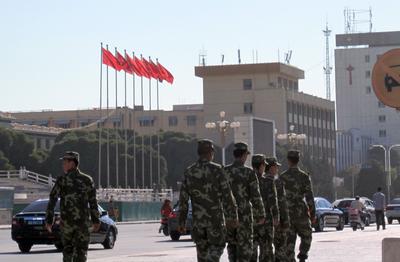Uyghur unrest in Xinjiang has progressed through a number of phases. There were riots and occasional bombings and assassinations throughout the 1990s until the Chinese government responded with a crackdown in 1996, which eventually stopped the violence. Riots erupted again between Uyghurs and Han Chinese in Urumqi throughout July 2009, with nearly 200 deaths recorded before order was restored. Since then, the region has continued to witness a trickle of protests, riots and attacks.
The Chinese government has generally pursued a two-pronged strategy to address Uyghur unrest in Xinjiang, combining economic development with crackdowns on separatist activities. But this strategy has only accentuated the region’s grievances. The government has pursued economic development by improving Xinjiang’s trade links, building transportation and economic infrastructure, and developing the region’s natural resources. But this method of economic development has brought a flood of Han Chinese immigrants, which has made Uyghurs a minority in what is theoretically their own autonomous region. The Han Chinese are also often significantly wealthier, better connected to the state and better educated than Uyghurs.
Even the non-economic sweeteners, such as allowing religious education and permits for the Hajj, the pilgrimage to Mecca, are heavily circumscribed and at the mercy of the state — which stages periodic crackdowns on ‘illegal’ religious activities and literature. At the same time, the government suppresses separatist activities by placing prohibitions on the movement of Uyghurs, and making widespread and often seemingly arbitrary arrests, usually of young Uyghur men. It then metes out swift and severe sentences, up to and including execution. The manner of the crackdowns often gives the impression that the government either does not know or does not care to distinguish between innocent Uyghurs and those actually involved in separatist activities. This, in turn, serves as a focal point for further protests.
Recent unrest reached a turning point with the outbreak of the July 2009 riots. The Chinese government sent high-level work teams to Xinjiang to investigate the matter, and transferred the long-standing, unpopular and hard-line provincial party secretary, Wang Lequan, in the following year. In the past several years, as highlighted by the 2009 riots, the nature of unrest in Xinjiang has taken on several new elements, each presenting a new challenge for the Chinese government and each complicating the potential for stability.
First, the 2009 riots in Urumqi apparently arose out of a violent factory fight between Uyghurs and Han Chinese in Guangdong. Information about the violence was widely circulated over the internet and through text messaging. This indicates that the Chinese government can no longer geographically isolate unrest and stamp it out, as had been the case in the past. The months-long restrictions on phone and internet communication following the riots were also criticised, even within China itself.
Second, Uyghur and Han Chinese civilians fought each other, rather than just the authorities — similar to the most recent round of violence. Prior to the Urumqi riots, while Han Chinese had certainly not escaped attack, much of the violence in Xinjiang was nominally targeted at Uyghur and Han Chinese government and party officials. Previous riots, such as those in Ghulja in 1997, often began as demonstrations surrounding the mistreatment of Uyghur prisoners by police, or a perceived official slight to Uyghur culture, then escalated as the protesters’ demands were not met. Tensions between Uyghur and Han Chinese civilians are thus relatively new. Han Chinese in Xinjiang are also increasingly critical of the government. The September 2009 protests in Urumqi were the result of Han Chinese anger at the central government’s handling of the July 2009 incident. This suggests that three cleavages now provide the basis for unrest: tensions between Uyghurs and the government, Uyghurs and Han Chinese, and Han Chinese and the government, thus further complicating government policy planning.
Finally, the Chinese government is not seriously worried about formally losing Xinjiang; it maintains a security apparatus with the resources and ruthlessness to keep Uyghurs from achieving outright independence. While Uyghur extremists clearly have the motivation to engage in violence, they do not have the tools or the political power to plan and execute a strategic, high-impact terrorist campaign. The mountainous terrain and limited land routes along Xinjiang’s borders make importing high-quality explosives and large quantities of munitions difficult. They are left to engage in attacks that require more improvised tactics and weapons, such as knives and improvised explosive devices. But precisely because current forms of unrest now require neither sophisticated tools nor extensive planning, repression is unlikely to stop a steady trickle of violence from continuing in the near future.
Justin Hastings is Lecturer at the Department of Government and International Relations, University of Sydney.

